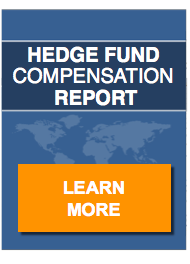Due diligence is the term assigned to investigating a hedge fund (or any investment) in detail. It delves into more than just historic returns and their volatilities. Investors want to understand the fund Strategy and its risks, the Fund itself, and the fund Manager, and the do so with quantitative and qualitative research. Quantitative Due Diligence concentrates mainly on the strategy itself, while Qualitative Due Diligence concerns itself with characteristics of the Fund and of the Manager.
Quantitative Due Diligence digs into the numbers generated and implied by the hedging strategy, and why. It also wants to know how the strategy works (is it model-driven?), whether it makes intuitive sense, and if it is repeatable. Is there good information in the strategy, or is the manager just a lucky or skilled trader without a discipline? Speaking of trading, there should be a well-defined trading process. Some of the measures used in Quantitative Due Diligence are listed below, but these do not fully address the risk assessment that is necessary.
A strategy has risk exposures that are not obvious. The way a hedge fund is run will result in certain risks such as market risk, currency risk, sector risk, interest rate risk, country risk and factor risk (style, size, etc.). It is not easy to get a handle on these and other risks, so an entire cottage industry has sprung up that offers risk analytics for hedge funds. A number of analytic software/data providers are devising ways to examine hedge fund risks without asking for too much transparency (see section on transparency).
Qualitative Due Diligence focuses more on the Fund itself, and on the Manager of the fund. The Fund characteristics that are reviewed are somewhat “legalistic”, and involve the terms of participating in the fund or partnership. Diligent investors want to know things like the minimum investment, the fee structure, the “lockup” period and liquidity rules, whether leverage is employed (does the manager borrow money to invest?), what the latest audited fund financials look like, transparency issues and even information on the Fund’s current investors.
Perhaps the most expensive and time-consuming part of due diligence involves investigating the fund Manager. Ultimately, you want to be reasonably sure that the Manager will run the portfolio the way he has proposed, and that the infrastructure and resources are in place to do so. This leads to a significant question and answer session, such as:
- Where did the fund principals come from, and what are their backgrounds?
- Has the manager invested some of his own money in the fund?
- Who is the prime broker? Who is the custodian of the assets?
- Who is the compliance person, and what is his background?
- What data sources and analytic software is used to run the product?
- Who is the fund administrator?
- Can the Manager adequately explain the strategy and its risks taken? Do you feel that the Manager is being evasive when answering questions?
- How are the key people compensated? Is there significant incentive for them to stay with the firm?
- Have many people recently left the firm? Why?
- Do the key people in the investment process have other duties at the firm?
In the end, investors are investing in people, not just a strategy. Lots of detailed questions may be asked, but due diligence is not fail safe. By being diligent, however, one can increase the odds of making money and of avoiding fund “blowups”.
Due diligence will not guarantee that one selects the best manager, but it may help avoiding some of the worst.
You might also be interested in:
How Investors Investigate Hedge Fund Managers
The Difference Between a Mutual Fund and a Hedge Fund
How Hedge Fund Fees Are Calculated
What is a Hedge Fund of Funds?
What are the Legal Issues with Hedge Funds?
How Hedge Fund Sales and Marketing Works
Hedge Fund Transparency and Reporting
What is the Role of the Prime Broker?


